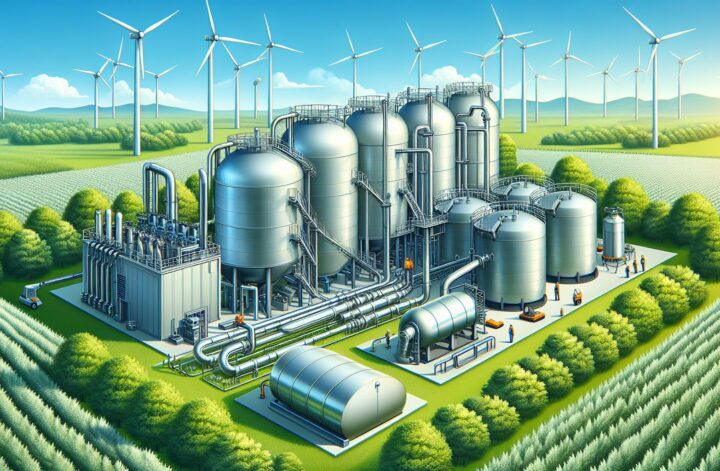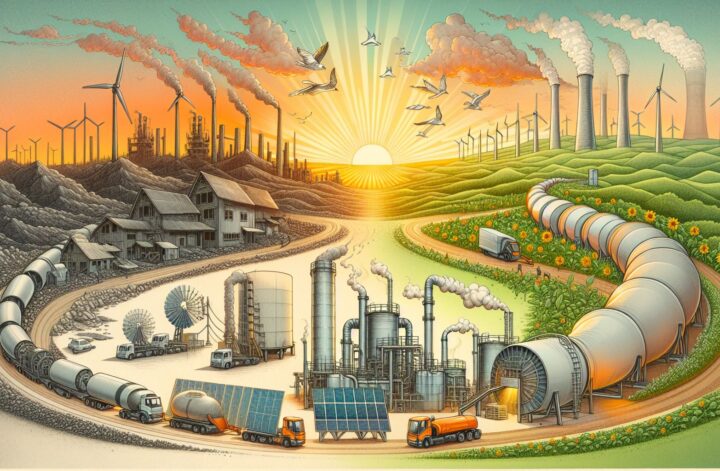Renewable energy has been a buzzword in recent times, with the world urgently looking for ways to decrease its carbon footprint. Within this umbrella term lies an array of technologies and methods for harnessing sustainable, clean energy sources. From wind, solar, hydroelectric, to geothermal energy, society has tapped into various natural resources in a bid to curb the eminent threat of climate change. Another less known but significantly central player in the renewable energy landscape is biogas. Biogas production taps into organic waste treatment and creates a sustainable energy resource that offers a myriad of benefits for our environment and economy.
What is Biogas?
Simply put, biogas is a type of biofuel that is naturally produced from the decomposition of organic waste within an environment lacking oxygen, known as an anaerobic environment. This process of decomposition is referred to as anaerobic digestion. When organic matter such as food scraps, animal waste among others, break down in an anaerobic environment, gases are produced. Biogas is primarily composed of methane and carbon dioxide. Methane capture holds the key to this energy production as it is this gas that can be burned to produce heat and electricity.
The Process of Biogas Production
Understanding biogas production requires a step into the world of biomass conversion processes. The life cycle of biogas flows through four primary stages: hydrolysis, acidogenesis, acetogenesis, and finally, methanogenesis.
- Hydrolysis is the first phase of the anaerobic digestion process, whereby hydrolytic bacteria break down complex organic materials like carbohydrates, fats, and proteins into simpler, smaller molecules through enzymatic reactions.
- Acidogenesis follows, involving the conversion of these smaller molecules into volatile fatty acids and alcohols through acidogenic bacteria.
- The process then advances to acetogenesis, where acetogenic bacteria convert the volatile fatty acids and alcohols into acetic acid, carbon dioxide, and hydrogen.
- In the final phase, methanogenesis, methanogens (anaerobic organisms) transform the acetic acid, carbon dioxide, and hydrogen into methane.
It is important to note that these processes do not take place in isolation. They are a reflection of “syntrophic relationships” amongst the different species of bacteria involved, whereby the output of one bacterial group serves as input for another, all in a carefully choreographed sequence to produce biogas.
The Role of Anaerobic Digesters in Biogas Production
The process of biogas production takes place in an anaerobic digester. Anaerobic digester design is critical in optimizing biogas yield while managing organic loading rate (OLR), hydraulic retention time (HRT), and solid retention time (SRT).
The OLR refers to the amount of organic material added to the digester within a specific timeframe. The HRT and SRT pertain to the average time the liquid and solid waste materials respectively stay inside the digester. Operational parameters like temperature also play a role. Digesters can be classified into mesophilic digestion or thermophilic digestion, maintaining average temperatures of 37°C and 55°C, respectively, to optimize bacterial activity.
Biogas Upgrading and Utilization
Once generated, the biogas undergoes an upgrading process before it is ready for use. Biogas scrubbing removes impurities like water vapor, hydrogen sulfide, and other trace elements that could harm engines or equipment used in conversion processes. The final product, biomethane, holds potential comparable to conventional natural gas and can be used in gas pipelines or compressed to fuel motor vehicles.
Combined heat and power (CHP) units are a common application of biogas, using it to generate electricity and heat simultaneously. It is an efficient process that maximizes the power quotient of the gas and minimizes waste generated.
Challenges and Solutions in Biogas Production
Despite its green footprint and potential, biogas production faces significant barriers. Inhibition of anaerobic digestion is one challenge, often caused by ammonia toxicity and sulfide toxicity, which can be harmful to the bacteria involved in the digestion process. Such complications can upset the populations of bacteria, disrupting the syntrophic balance and leading to sub-optimal biogas production.
Strategies to mitigate these challenges include effective mixing and heating in the digester, trace element supplementation to boost the performance of the bacteria, and particular attention to the organic loading rate, amongst others.
Greenhouse Gas Reduction and Sustainability
Finally, biogas production offers a sustainable solution for organic waste treatment and contributes significantly to greenhouse gas reduction. By capturing methane during the digestion process, the release of this potent greenhouse gas into the atmosphere is avoided.
Furthermore, the byproduct of the anaerobic digestion process—digestate—can be utilized as a high-quality, nutrient-rich bio-fertilizer. This closes the loop in the nutrient cycle, providing a complete organic waste recycling methodology. Moreover, the residual solids—otherwise known as biosolids—are being researched for their potential utilization in construction and landscaping applications.
The Bottom Line
The journey of biogas, from waste to renewable energy utility, offers promising potential to contribute to our global renewable energy mix. While challenges remain, continuous research and development can elevate the efficiency and application scale of biogas in the years to come.
Biogas might not be the magic bullet to our energy and environmental problems. However, every bit counts in our collective push towards a greener, cleaner, and sustainable future. By taking control of organic waste and converting it into a precious energy source, biogas production showcases how innovation can harness human ingenuity for ecological balance.




